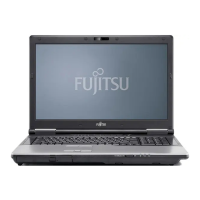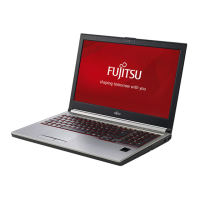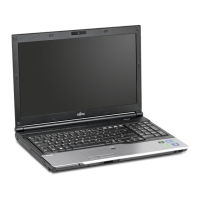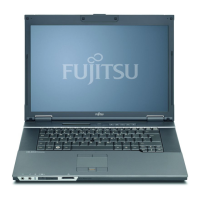Working with the notebook
Second hard disk in RAID group (device-dependent)
In o rder to use RAID, it is necessary to either deactivate or uninstall the
ShockSenso rUtility program (see "
Sho ck Sensor Utility", Page 37).
RAID (Redundant Array of Independent Disks, also know as ’disk array’) is a me thod
of combining two ha rd disk drives into one logical unit.
A disk array can be used advantageously to improve performa nce or alternatively
to improve error tolerance (data protection).
The operating system detects all hard disks in a disk array as a single physical hard disk.
The individual hard disks in a disk array are called "members".
There are usually a few methods in which hard disks can be combined. These
different methods are referred t o as RAID levels. The different RAID levels
represent different performance and security levels.
Depending on the size of the hard disks, the process of combining two hard disks to
create a RAID group may take s evera l hours. S ystem performance may be impaire d during
this period. For further information about how to configu re your RAID system, please
refer to the Help fu nction of the RAID Manager software supplied with your device. The
H910 supports RAID Level 0 to increase hard disk performance.
RAID 0 (stripin
g)
Reads and writes data sectors across multiple hard disks using interleaving.
RAID 0 does not su pport fault tolerance. Any data loss will affect the entire
disk array if a single hard disk fails.
RAID 0 is de signed to provide the highest performance. The data capacity of the disk
array is equal to the number of hard disks multiplied by the capacity of the smallest hard
disk. The block size can be set between 4 Kbyte and 128 Kbyte.
RAID level
Number of hard dis k
drives Capacity Benefits
RAID 0 (striping)
2
Number of hard drives
x smallest capacity
Highest performance,
no data protection
Memory c
ards
Slot
Your notebook is equipped with an integrated memory card reader.
Observe the manufa cturer’s instructions when handling the memory cards.
Memor
ycard
38 Fujitsu Tech nology Solutions

